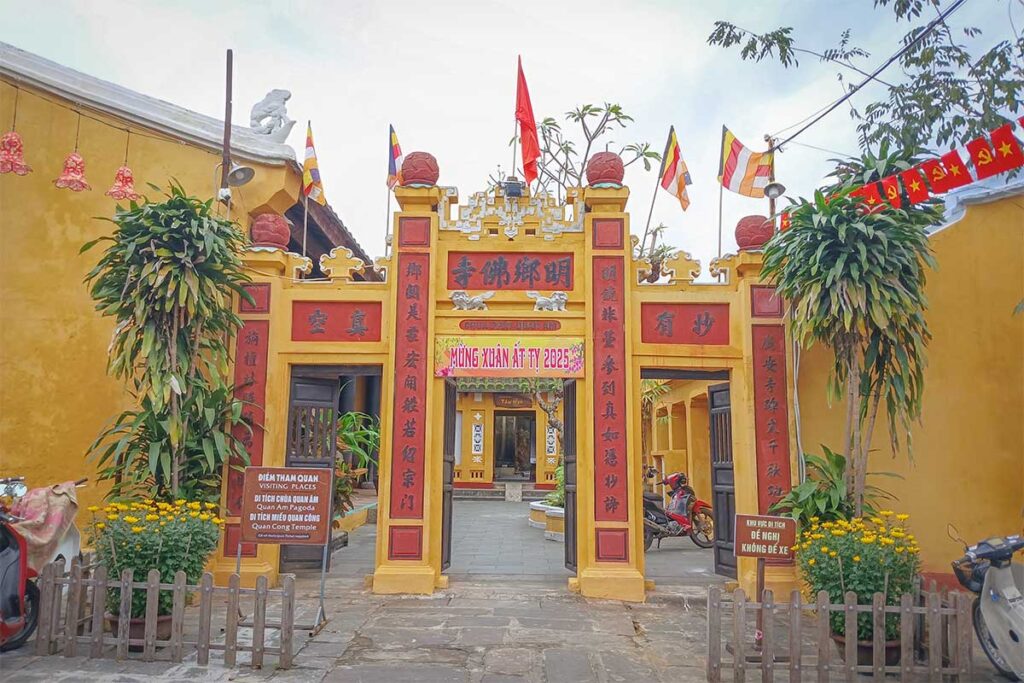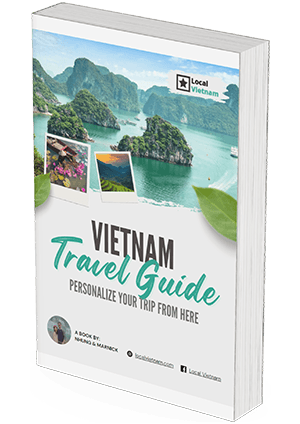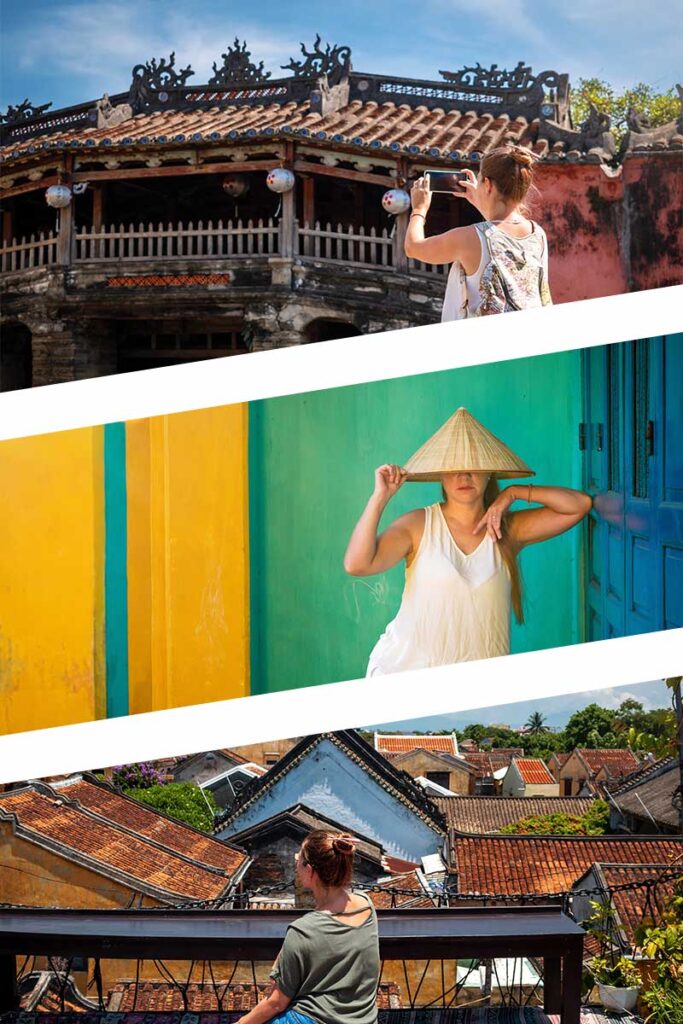What is Quan Am Pagoda like?
Quan Am Pagoda in Hoi An is located at 13 Nguyen Hue Street, right behind the more famous Quan Cong Temple. It’s easy to miss but worth a short stop if you’re already exploring the area.

This temple is not to be confused with the larger Quan Am Pagoda in Ho Chi Minh City—they’re unrelated aside from both honoring the Bodhisattva of Compassion.
Here in Hoi An, it’s a quiet, modest place of worship, not designed for tourists. You’ll find a small main hall with wooden beams, aged altars, and simple yet elegant details blending Chinese and Vietnamese styles. The atmosphere is calm and spiritual, often with locals stopping by to light incense or say a short prayer.
Hoi An Walking Tour by Local Guide
- Experience Explore Hoi An’s Ancient Town with an expert local guide and insider stories.
- Includes Market visit, traditional house, colorful temples, and coffee break by electric car.
History & cultural significance
Quan Am Pagoda in Hoi An was originally built before 1653 by the Minh Huong community—ethnic Chinese who had settled in the area. In the early 1900s, the temple was relocated to its current location, directly behind Quan Cong Temple.
In the late 17th century, Zen Master Thich Dai San (Shi Dashan) stayed here during his visit to Vietnam, recording details about the temple in his travel writings. Over the years, it has remained a meaningful site for both religious practice and local heritage.
During the 1970s and 1980s, the pagoda was temporarily used as a local government office. It was later restored and returned to its original function as a working Buddhist temple.
In 1991, it was officially recognized as a National Historic-Cultural Site, preserving its significance as one of Hoi An’s oldest religious landmarks.
What to see at the Quan Am Pagoda
1. Main gate and Courtyard

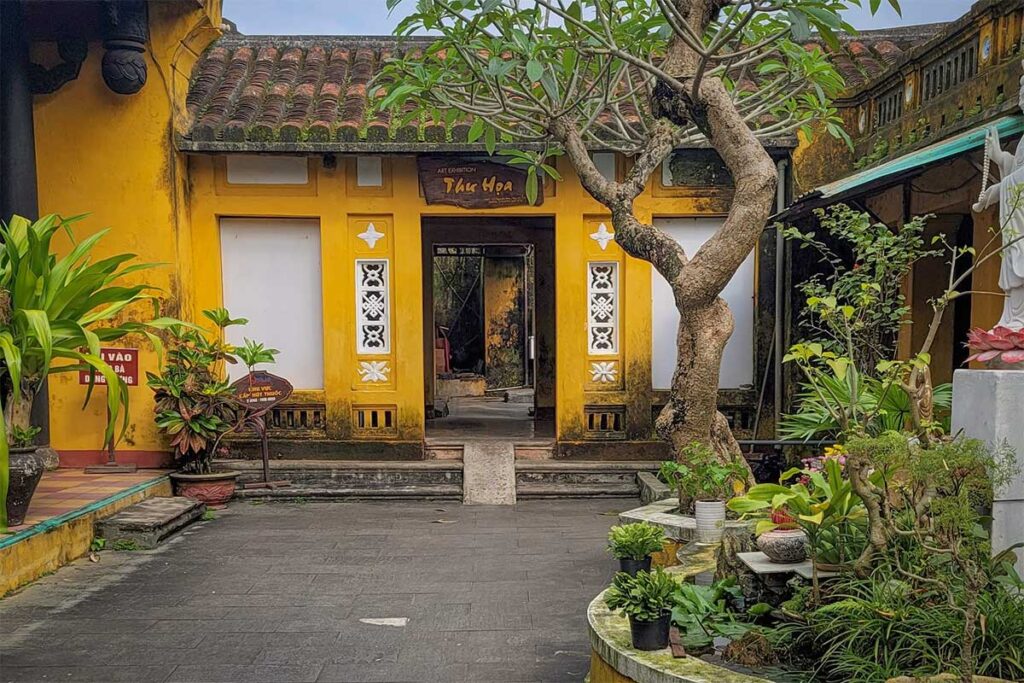
A small Tam Quan gate marks the entrance, with weathered wooden beams and subtle Chinese poetry above the doorways. The shaded courtyard is simple, with a few trees and quiet corners for sitting.
2. Main Hall

The altar inside features the classic Trio of Buddhas from Mahayana tradition: Amitabha (left), Guan Yin/Lady Buddha (center), and Mahasthamaprapta (right). You’ll also find Kṣitigarbha (Dizang) and other figures placed around the modest interior.
3. Woodwork and artistic touches
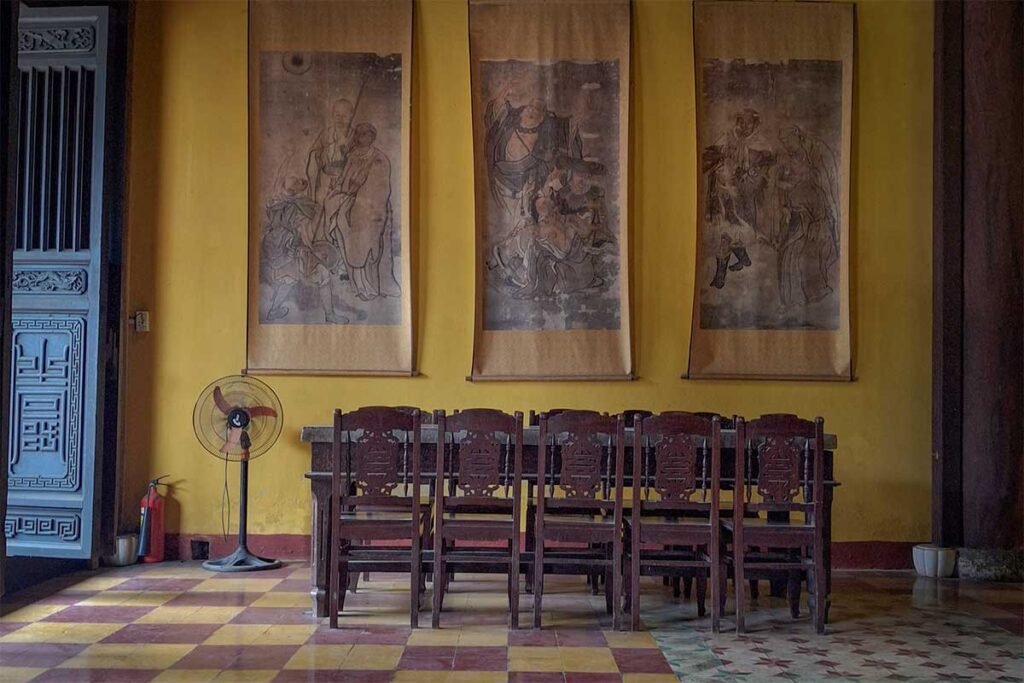
Some of the interior beams and columns feature wooden carvings believed to be made by Kim Bong carpenters—a subtle nod to Hoi An’s artisan heritage. While limited, you may also spot calligraphy scrolls or paintings, often displayed near the back or side rooms.
4. Quiet, Local atmosphere

What stands out most is the peaceful vibe. It’s a functioning temple without tourist crowds or flashy décor. Compared to the nearby assembly halls, this spot offers a more intimate and authentic glimpse into everyday religious life in Hoi An.
Visiting information
Location: 13 Nguyen Hue Street, directly behind Quan Cong Temple. It’s easy to walk to if you’re exploring the Hoi An Ancient Town on foot.
Opening Hours: Typically open daily from around 7:00 AM to 6:00 PM.
Entry: Included in the Hoi An Ancient Town ticket (120,000 VND). Visiting counts as one of your five ticketed sites, so choose accordingly.
Etiquette: Wear modest clothing (cover shoulders and knees), keep your voice low, and don’t enter areas marked as private or in active use by monks.
Quick Tip: If you’re limited on ticketed sights, you might prioritize larger or more architecturally impressive temples first. For better comparisons, see our full guide on Best Temples in Hoi An.
Is Quan Am Pagoda worth visiting?
Honest summary: Quan Am Pagoda in Hoi An is a peaceful stop, especially if you’re already visiting the adjacent Quan Cong Temple. However, it’s not essential — the space is small and simple, and doesn’t offer the visual or architectural richness of other nearby sights.
Still, it’s a good choice if you enjoy quiet, spiritual places and want a short break from the tourist crowds in the Old Town.
